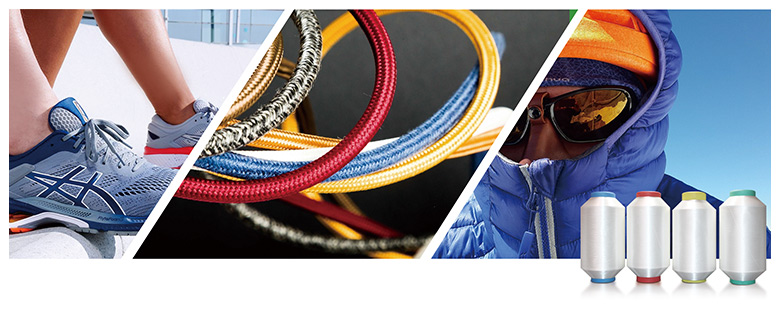- Innovative applications of nylon thermal fuse in the field of clothing
- Future competition will be an ecological competition! Jilin Chemical Fiber Forum in Hangzhou
- The establishment conference of Guangzhou Modern Textile and Garment New Quality Productivity Research Institute and the co-construction conference of the textile industry innovation ecosystem were held
- During the Great Snow season, how does nylon thermal fuse stabilize the foundation
- The 2025 Digital Transformation Conference of the Textile and Garment Industry was held
- Nylon thermal fuse A new bonding tool in the textile field
- Nylon thermal fuse empowers the upgrading of the textile industry
- Xinye County held a symposium on the development of the textile and garment industry chain
- The 2025 Central and Western China Textile and Garment Characteristic Industry Cluster Cultivation Seminar and Industrial Chain Supply and Demand Matching Activity was grandly held
- Modern interpretation of the efficient bonding process of nylon thermal fuse

- Contact: Mr. Jin +86 15805011538
- Email: xmzx333@163.com
- Web: www.xlfiber.com
- Add: 85 Jinghua Avenue, Xiyuan Industrial Park, Zhangping City, Fujian
After nearly two years of negotiations, the European Parliament has formally approved the EU's Carbon Border Regulation Mechanism (CBAM) after a vote. This means that the world's first carbon import tax will soon be in place, with the CBAM bill taking effect in 2026.
Our country will face a new round of trade protectionism
Under the influence of the global financial crisis, a new round of trade protectionism appears on the rise, and China, as the world's largest export country, has suffered greatly.
If Europe and the United States use climate and environmental issues to impose "carbon tariffs", China will face a new round of trade protectionism. Since there is no unified international carbon emission standard at present, once the European and American countries impose "carbon tariffs" and implement carbon standards in line with their own interests, other countries can also impose "carbon tariffs" according to their own standards, which is bound to trigger a trade war.
What is a carbon tariff
Carbon border regulation Mechanism (CBAM) refers to countries or regions that strictly implement carbon emission reduction policies, requiring the import (export) of high-carbon products to pay (return) corresponding taxes or carbon quotas.
Commodities covered by the CBAM include iron, steel, cement, aluminium, fertiliser, electricity, hydrogen and, under certain conditions, indirect emissions, as well as screws and bolts and downstream products such as steel products. Those who import these goods pay the difference between the carbon price in the producing country and the price of carbon allowances in the European Union's Emissions Trading system.
China's energy-intensive exports would be subject to a "carbon tariff"
At present, the countries proposing to impose "carbon tariffs" are mainly developed countries such as Europe and the United States, and China's exports to Europe and the United States are not only a large amount of goods, and concentrated on high energy consumption products.
In 2008, China's exports to the US and the EU were mainly mechanical and electrical products, furniture toys, textiles and raw materials, with a total export volume of US $225.45 billion and US $243.1 billion respectively, accounting for 66.8% and 67.3% of China's total exports to the US and the EU.
Most of these exports are energy-intensive, carbon-intensive and low-value-added products, which are easily subject to "carbon tariffs". According to a World Bank research report, if the "carbon tariff" is fully implemented, Chinese manufacturing could face an average tariff of 26% in the international market, increasing costs for export-oriented enterprises and reducing exports by 21%.
Will carbon tariffs affect the textile industry?
The tariffs, which cover imports of steel, aluminium, cement, fertiliser, electricity and hydrogen, do not affect different industries in a uniform way. Textiles are not directly affected by the tariffs.
So will carbon tariffs be extended to textiles in the future?
This should be seen from the carbon tariff policy starting point. The reason for the tariffs is to prevent "carbon leakage" -- when EU companies shift production to countries with less stringent emissions cuts to avoid the high cost of carbon emissions within the EU. So, in theory, carbon tariffs focus only on industries that are at risk of "carbon leakage", that is, those that are "energy intensive and trade exposed" (EITE).
The Commission's official list of industries at risk of "carbon leakage" currently includes 63 economic activities or products, of which the following are related to textiles: "preparation and spinning of textile fibres", "manufacture of non-wovens and their products, except clothing", "manufacture of man-made fibres" and "finishing of textile fabrics".
In general, compared with steel, cement, ceramics, oil refining and other industries, textile is not a high-emission industry. Even if the scope of carbon tariff is expanded in the future, it will only affect fiber and fabric, and it is likely to rank behind oil refining, ceramics, paper and other industries.
The textile industry will not be directly affected, at least for the first few years of the carbon tariff. However, this does not mean that textile exports will not encounter the green barriers of the European Union. The measures being developed by the EU under the policy framework of its Circular Economy Action Plan, in particular the Sustainable and Circular Textiles Strategy, should attract the attention of the textile industry. It indicates that textile must pass a "green threshold" to enter the EU market in the future.
Fujian ZhangpingXielong Group High-tech Chemical Fiber Company Co., Ltd. leading products of include:nylon thermal fuse, TPU special filament, polyester thermal fuse, TPU hot melt omentum, PA hot melt omentum,.The company has always adhered to the 3s core service tenet: "saving time, cost savings, saving losses", advocates a total of industrial value, and is committed to providing a better solution for the overall industrial chain. Plan, welcome to buy the nylon thermal fuse,polyester thermal fuse!
- Future competition will be an ecological competition! Jilin Chemical Fiber Forum in Hangzh
- Innovative applications of nylon thermal fuse in the field of clothing
- The establishment conference of Guangzhou Modern Textile and Garment New Quality Productiv
- During the Great Snow season, how does nylon thermal fuse stabilize the foundation
- The 2025 Digital Transformation Conference of the Textile and Garment Industry was held
- Nylon thermal fuse A new bonding tool in the textile field
- Nylon thermal fuse empowers the upgrading of the textile industry
- Xinye County held a symposium on the development of the textile and garment industry chain
- The 2025 Central and Western China Textile and Garment Characteristic Industry Cluster Cul
- Modern interpretation of the efficient bonding process of nylon thermal fuse

